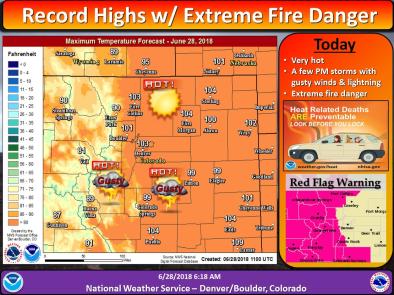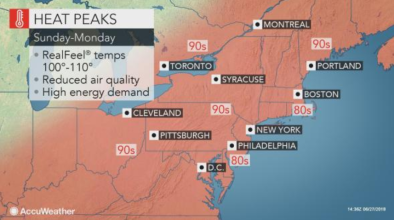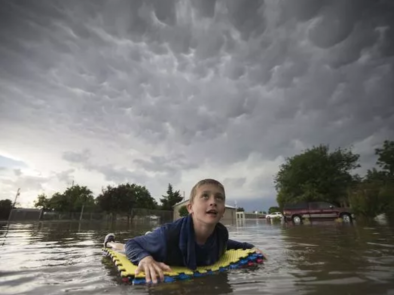Science Source
Interactions between urbanization, heat stress, and climate change
- States that heat stress (HS) is a leading cause of weather-related human mortality
- States that heat stress is expected to worsen as temperatures continue to increase due to climate change
- States that urban areas can manify heat stress because of the urban heat island effect
- Uses an urban canyon model coupled to a land surface model to quantify present-day and projected mid-21st century rural and urban heat stress for boreal summer over the U.S. and southern Canada
- Examines the effects of three urban density classes on heat stress
- Notes that five indices of heat stress are implemented in the model:
- NWS Heat Index (HI)
- Apparent Temperature (AT)
- Simplified Wet Bulb Globe Temperature
- Humidex
- Discomfort Index
- Finds that the present-day urban-rural contrast in heat stress differs according to which index is used
- The HI and Humidex have higher urban-rural HS for all density classes than defined by temperature alone
- Future urban HS is amplified by 0.5–1.0 °C for the AT, HI, and Humidex compared to temperature alone
- Finds that for four cities examined in further detail, climate change by mid-century increases the number of high heat stress days and nights in both rural and urban areas, the magnitude being highly dependent on heat stress index, urban density class, and each city’s climatic setting
- Finds that Houston exhibits noteworthy mid-century increases in high heat stress nights, with more than half of summer nights qualifying as high heat stress in not only urban areas but also rural areas, indicating the need to consider vulnerability and adaptive capacity of both rural and urban populations in the context of climate change
Related Content
Headline

Jun 29, 2018 | The Denver Post
Denver’s scorching hot weather on Thursday tied an all-time record, a roasting 105
Headline

Jun 28, 2018 | Business Insider
A major heat wave is about to fry the East Coast — here's what's coming
Headline

Jun 28, 2018 | AccuWeather
Most intense heat to peak ahead of July 4th in northeastern US
Headline

Jun 28, 2018 | USA Today
Dangerous, oppressive heat wave to scorch central, eastern US as 'heat dome' expands


